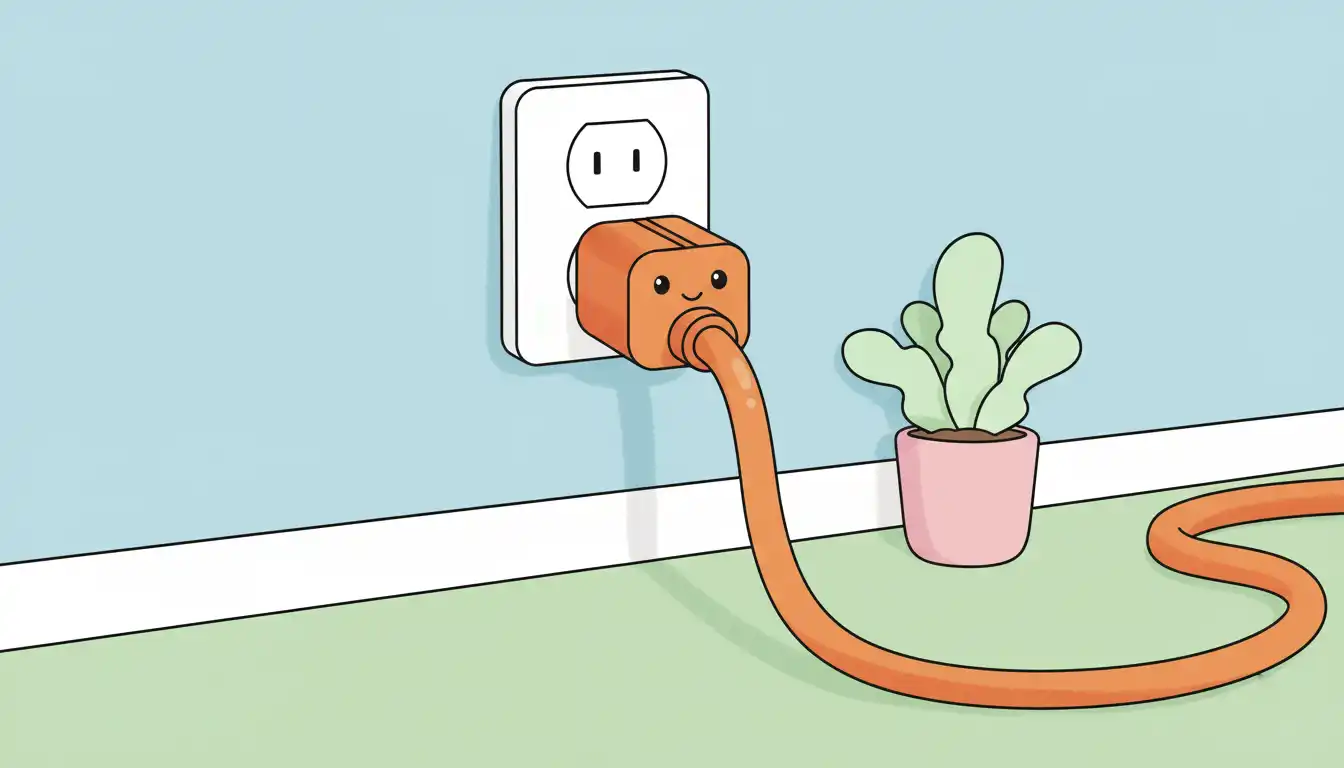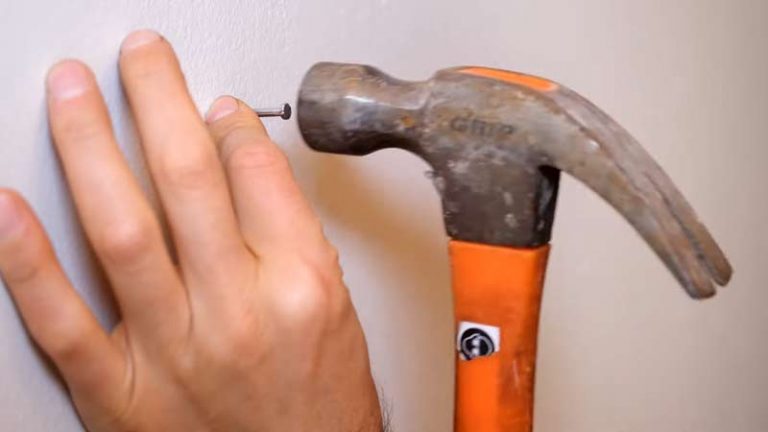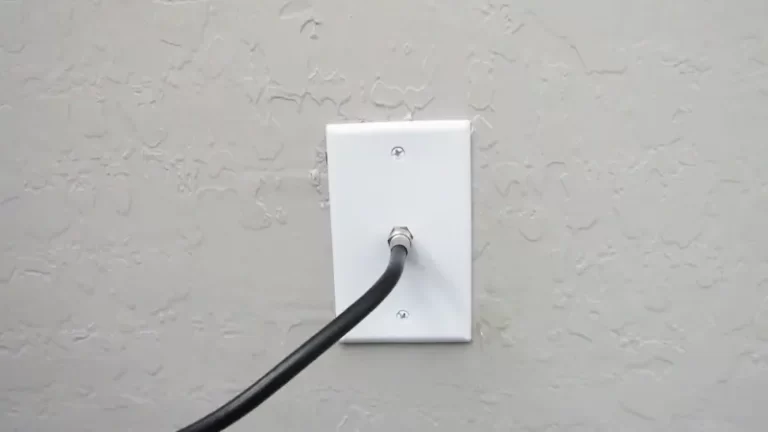Permanent Extension Cord: The Hidden Fire Risk in Your Home & The #1 Fix
It’s a familiar story in almost every home. You buy a new lamp, set up a home office, or mount a TV, only to find the nearest outlet is just out of reach. The quickest, easiest fix is grabbing an extension cord, tucking it along the baseboard, and calling it a day. But when “temporary” turns into months or even years, that convenient solution becomes a serious, hidden hazard.
Using a standard extension cord as a permanent wiring solution is one of the most common electrical mistakes made in households. While it seems harmless, this practice is strictly against electrical safety codes for very good reasons. It creates a significant risk of fire, electrical shock, and damage to your expensive electronics.
You'll Learn About
Why Your “Set and Forget” Extension Cord Is a Ticking Time Bomb
The convenience of an extension cord masks significant dangers when it’s misused as a permanent fixture. Electrical safety organizations and professional electricians are unanimous in their warning: extension cords are for temporary use only. Ignoring this advice can have devastating consequences.
The National Electrical Code (NEC) Has Spoken
The National Electrical Code (NEC), the benchmark for safe electrical design and installation in the United States, is crystal clear on this topic. NEC Article 400.8 explicitly prohibits using flexible cords and cables as a substitute for the fixed wiring of a structure.
This rule isn’t arbitrary. Permanent wiring inside your walls is protected, insulated, and designed to handle a consistent electrical load for decades. Extension cords are not built to the same standard, making them vulnerable to degradation and failure over time.
The Slow Burn: How Cords Degrade Over Time
Unlike the robust wiring in your walls, extension cords are susceptible to rapid wear and tear. The outer insulation can break down from being stepped on, crushed by furniture, or even from long-term exposure to sunlight through a window. Every bend and kink fatigues the delicate copper wires inside, increasing electrical resistance.
This increased resistance generates heat. When a cord is run under a rug or covered by furniture, that heat has nowhere to escape, creating a dangerous buildup that can melt the insulation and ignite nearby flammable materials like carpet or curtains. This is a primary cause of household electrical fires.

A Deceptive Sense of Security
A common fallacy is thinking, “If it works now, it must be safe.” However, the damage is often invisible, happening slowly over time. The cord that powers your home office setup perfectly today could be silently degrading, with frayed internal wires or cracked insulation that puts your home at risk.
Furthermore, the physical cord itself presents a tripping hazard. A sudden tug on the cord can also damage the plug or the wall outlet, leading to loose connections that can arc and spark. The integrity of the plug is crucial, and any damage, such as a missing grounding pin, compromises its safety, much like issues seen with an extension cord without a wide prong.
The Right Way: Safe, Permanent Solutions for Power Where You Need It
Thankfully, there are several safe, code-compliant, and permanent alternatives to a stretched extension cord. Choosing the right one depends on your budget, your comfort level with DIY projects, and the specific needs of your space. These methods establish a proper electrical pathway, ensuring safety and reliability.
Solution #1: Install a New Electrical Outlet
This is the gold standard and the most professional solution. Hiring a licensed electrician to install a new outlet exactly where you need it permanently resolves the issue. It seamlessly integrates into your home’s wiring system, is perfectly safe, and can even increase your home’s value.
While this is the most expensive option upfront, the peace of mind and absolute safety it provides are invaluable. An electrician can ensure the new outlet is on an appropriate circuit and meets all local building codes.
Solution #2: The In-Wall Power Extension Kit
For those looking for a clean, professional look without needing an electrician, an in-wall power extension kit is a brilliant option. These kits are specifically designed for situations like powering a wall-mounted TV or a standing desk where you want to hide the cables.
The kit typically includes two modules connected by a code-compliant, in-wall rated power cable. One module is installed in the wall behind your device, and the other is placed near an existing outlet. You simply plug the kit’s power cord into your existing outlet, and it safely extends power up through the wall to the new, recessed outlet. No direct modification to your home’s wiring is required.
Solution #3: Surface-Mounted Wire Channels (Raceways)
If cutting into your walls isn’t an option—perhaps you’re renting or have concrete walls—a surface-mounted raceway is an excellent compromise. These are plastic or metal channels that adhere to your wall, allowing you to run wiring safely along the surface.
You can run code-compliant electrical wire inside the raceway to a new surface-mounted outlet box. This method protects the wiring from damage, eliminates tripping hazards, and offers a much cleaner look than a loose cord. Many raceways are paintable, allowing them to blend in with your wall color.
The Wrong Tool for the Job: What NOT to Use
It’s crucial to recognize what not to do. Never use a standard extension cord as a long-term solution. It is also critical to avoid dangerous DIY fixes, such as creating a Romex extension cord. Romex cable is designed for permanent installation inside walls and is not flexible enough for use as an extension cord, leading to wire damage and extreme fire risk.
Furthermore, never use a standard extension cord for heavy-duty appliances. There are serious questions to ask before you can you plug a dishwasher into an extension cord, and the answer is almost always no due to the high power draw and risk of overheating.
Choosing Your Solution: A Head-to-Head Comparison
To help you decide which permanent power solution is right for you, here is a direct comparison of the options.
| Solution | Safety Rating | Approximate Cost | Installation Difficulty | Aesthetics |
|---|---|---|---|---|
| Standard Extension Cord | Very Low (Temporary Use Only) | $10 – $50 | Very Easy | Poor |
| New Electrical Outlet | Excellent | $150 – $300 (Professional) | Professional Recommended | Excellent |
| In-Wall Power Kit | Excellent | $50 – $100 | DIY Friendly | Excellent (Hidden) |
| Surface Raceway | Good | $30 – $70 | Easy DIY | Good (Visible but neat) |
Frequently Asked Questions About Permanent Wiring
Many homeowners have similar questions when facing this common problem. Here are clear, authoritative answers to the most frequent inquiries.
Can I run an extension cord through a wall, ceiling, or floor?
Absolutely not. This is a major fire hazard and a serious violation of electrical codes. Walls, floors, and ceilings contain insulation and structural members that can cause an extension cord to overheat. Furthermore, the cord would be inaccessible for inspection, meaning any damage would go unnoticed until it causes a fire.
Can I staple or nail an extension cord to a wall?
No. Fastening an extension cord with staples or nails is extremely dangerous. It is very easy to accidentally pierce the cord’s insulation, which can cause a short circuit or an electrocution hazard. OSHA regulations specifically prohibit this practice for safety reasons.
What makes an extension cord “heavy-duty” and can it be used permanently?
A heavy-duty extension cord has a thicker wire gauge (a lower gauge number, such as 12-gauge or 10-gauge), allowing it to carry more electrical current without overheating. While they are safer for high-power tools and appliances, even heavy-duty cords are still designated for temporary use only by the NEC.
Is there such a thing as a code-compliant “permanent extension cord”?
No, the term itself is a contradiction. An “extension cord” is, by definition, a temporary device. The correct, code-compliant permanent solutions are the ones discussed above: installing a new outlet or using specialized kits like in-wall power extenders or surface raceways that use permanent wiring methods.
The Bottom Line: Prioritize Safety Over Convenience
The temptation to use an extension cord as a quick fix is understandable, but the long-term risks are far too great. A simple, visible cord can mask a dangerous, slow-burning fire hazard that puts your property and your loved ones at risk.
By understanding the dangers and exploring the safe, readily available alternatives, you can make an informed choice. Whether you hire an electrician to install a new outlet or opt for a DIY-friendly in-wall kit, you are investing in the safety and integrity of your home’s electrical system.



![Splice 10/3 Wire [is Easy to Do]](https://fixitinthehome.com/wp-content/uploads/2023/02/Splice-10_3-Wire-768x432.webp)